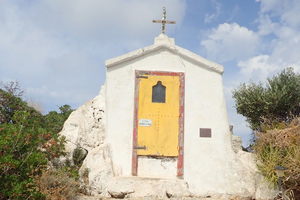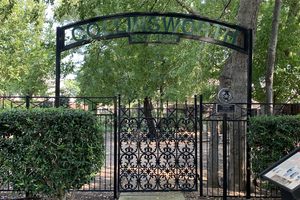In the Andes, the Fear of Oppressors Manifests as the Gruesome Pishtaco
In Inca mythology, there is a deity, Viracocha, whose name can be translated as “sea of fat.” He is the creator of the Earth and all its creatures, the maker of the sky and the sea and all the other gods. Among the Quechua people, he must be honored. “In the Andean world, indeed, blood and fat are among the essential offerings to the sacred powers: the sacrifice of slaughtered animals and the offerings of their blood constitute the opening sequence of all religious ceremonies,” writes French historian Nathan Wachtel in Gods and Vampires: Return to Chipaya. “Animal fat (generally llama fat) is one of the basic ingredients in the composition of ritual tables (mesas).”
To the Quechua, fat is sacred, and has also served medicinal purposes for centuries. It wasn’t just in the Andes that fat had such uses. Far to the north, before they reached Inca lands, conquistadors used the fat of fallen Maya to dress their own wounds, as reported by one of those conquerors, Bernal Díaz del Castillo, in The Discovery and Conquest of Mexico 1517–1521. It is easy to imagine the disgust and fear the surviving Maya must have felt upon seeing such a thing after a military defeat. It is believed similar battles during the later conquest of the Inca Empire inspired the legend of the pishtaco, a fat-sucking monster known across various countries in South America. No stories of the pishtaco exist from before the Spanish Conquest.
The name “pishtaco” comes from the Quechuan word pishtay, which means to “behead,” “cut the throat,” or “cut into slices.” While most Quechuan speakers are from Peru, over the years they have migrated into Bolivia, Ecuador, and other nearby mountainous regions, bringing the legend of pishtaco with them. Pishtacos are often compared to vampires, but instead of sucking blood, they suck the fat from anyone careless enough to travel alone at night.
“In the Andes, it’s thought that the vitality of the person is in the fat in their body,” says John McDowell of Indiana University’s Department of Folklore and Ethnomusicology. “People who are very bony and skinny, it’s thought that they’re wasting away and they don’t have a strong life force. So the kharisiri, or the pishtaco—those are the comparable names for the same kind of figure—they come after this vital life force and deplete it.”
According to Pishtacos: Human Fat Murderers, Structural Inequalities, and Resistances in Peru by Ernesto Vasquez Del Aguila, the most “advanced” pishtacos are able to do take their victims’ fat in a far stealthier way. “Some pishtacos, it is believed, do not kill their victims instantly, but they survive for a short period of time and then die,” he writes. “These pishtacos steal the fat with great mastery, using syringes, so that their work is unnoticeable; their victims awaken without any symptoms or pain, but they get sick, become gradually weaker and after a few days they die without knowing the causes of their deaths.”
In one of the more recent, visible, documented stories of the pishtaco, in 2009, a group of men captured dozens of locals in the highland jungle region of Huánuco, more than 160 miles from the Peruvian capital of Lima. They used candles to render their fat, which was collected in old soda bottles and sold for use in rituals. This practice continued for years before three of them were captured and confessed. They led authorities to the remains of at least 60 adults. The story went national, then global.
Many of those from the mountains made it clear they believed the men to be pishtacos. “This should open the eyes of those Peruvians who live in the cities and ignore what happens in the provinces,” wrote one commenter on a news article about the killings. “This case is just one of thousands that demonstrate that these stories are real, that they are not ‘rumors.’ Limeños [those from Lima] had only skepticism.”
What connects conquistadors, missionaries, well-meaning doctors, and cold-blooded killers is what makes the pishtaco legends most frightening of all: They are not supernatural, but human.





